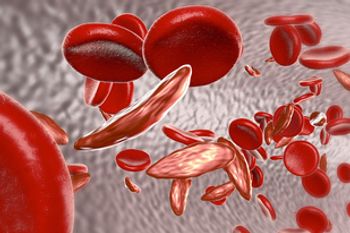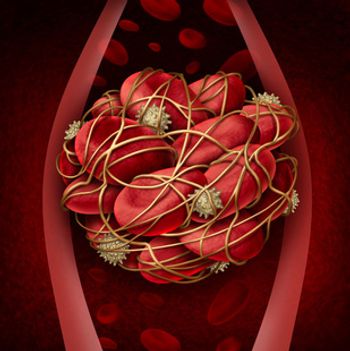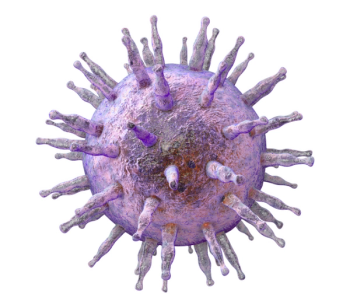
Rare Disease
Latest News

CME Content




The new initiative will not focus on donor-related bone marrow transplants in sickle cell disease, but instead will home in on genetic modifications of a patient’s own stem cells.

The ongoing REVEAL study, a prospective observational study of US patients with the myeloproliferative neoplasm polycythemia vera (PV), is designed to gather data on disease burden, clinical management, patient-reported outcomes (PROs), and healthcare resource utilization of this patient population.

In their study published in Nature Communications, the authors mapped out the epigenomic profiles of rheumatoid arthritis (RA) and osteoarthritis for the first time to provide insight on RA-specific pathways and transcription factor motifs. A surprising discovery was that the Huntingtin-interacting protein-1 may play a role in the pathogenesis of RA.


While the pathogenesis of autoimmune myelofibrosis is not completely understood, in patients with systemic lupus erythematosus, it may be triggered by circulating immune complexes that induce megakaryocytes to release platelet-derived growth factor.


Using whole-exome sequencing and evaluating germline mutations, researchers have discovered novel mutations in several genes among patients with essential thrombocythemia and primary myelofibrosis, which could influence the treatment they receive.

According to treatment recommendations from the European LeukemiaNet and the National Comprehensive Cancer Network, patients with high-risk polycythemia vera (PV) should receive cytoreductive medication together with standard treatments for low-risk PV: phlebotomy and low-dose aspirin.

Patients with neurodegenerative ataxia that are treated with cerebello-spinal transcranial direct current simulation (tDCS) have significant improvements in gait, upper limb coordination, quality of life, and other neurological evaluations of cerebellar deficits, according to results from the CStDCSAtaxia trial.

The COMBI study, a prospective, open‐label, single‐arm phase 2 study ongoing in Denmark, is investigating the feasibility of treating patients with low- to intermediate-risk myelofibrosis or polycythemia vera with low-dose pegylated interferon alfa-2 in combination with ruxolitinib.

Ovid Therapeutics Inc., a biopharmaceutical company, recently announced that the phase 2 STARS trial, which tested the efficacy of the investigational drug OV101, achieved its primary endpoint of safety and tolerability for treating Angelman syndrome.

Extramedullary hematopoiesis—the presence of hematopoietic activity in sites outside of the bone marrow—can occur in malignant and non-malignant hematologic diseases, and they may be a complication of primary myelofibrosis.



Viruses, when engineered, may have the potential to alter the course of cancer by driving tumor cells to express novel viral antigens or enhance the production of existing tumor antigens.

The investigators in a recent study found that prior thrombotic events and leukocytosis were linked to subsequent thrombotic events in general, and prior arterial events and hyperlipidemia were linked with subsequent arterial events.

Pentraxin-3 is known to promote the transition of monocytes to fibrocytes, though little is known about its role in myelofibrosis.

Insilico Medicine, an artificial intelligence (AI) for drug discovery company, and A2A Pharmaceuticals, Inc., a biotechnology company focused on novel drug development for oncology, have recently announced their research collaboration to form a new company, Consortium.AI, which will apply advances in AI to discovery of novel small molecules for the treatment of Duchenne muscular dystrophy (DMD) and other rare diseases.

While Orkambi was already approved to treat patients aged 6 years and older, this week’s approval marks the first time that very young patients, aged 2 to 5 years, have had a therapeutic option available to treat the cause of their cystic fibrosis.

In July 2018, the FDA approved iobenguane I 131 (Azedra), the first treatment for patients with unresectable pheochromocytoma or paraganglioma, which are rare tumors of the adrenal gland, that require systemic anticancer therapy. These tumors, which typically appear at an early age and are associated with premature death, can increase the production of epinephrines and norepinephrines, leading to a host of symptoms, including hypertension, vomiting, weakness, and chest pain.

Notably, in contrast to previous reports on palliative care in children, in which most children died at home, most of the children who died during the study period died in the hospital or in the intensive care unit. In fact, some of the children died while receiving interventions, such as the placement of a percutaneous endoscopic gastrostomy tube.

Fenfluramine, a drug that was previously sold as an appetite suppressant before it was withdrawn from the market in 1997 over concerns about its link to heart valve problems, may have a new application; low doses of fenfluramine hydrochloride have now proven successful in treating Dravet syndrome, a particularly severe form of epilepsy.











































